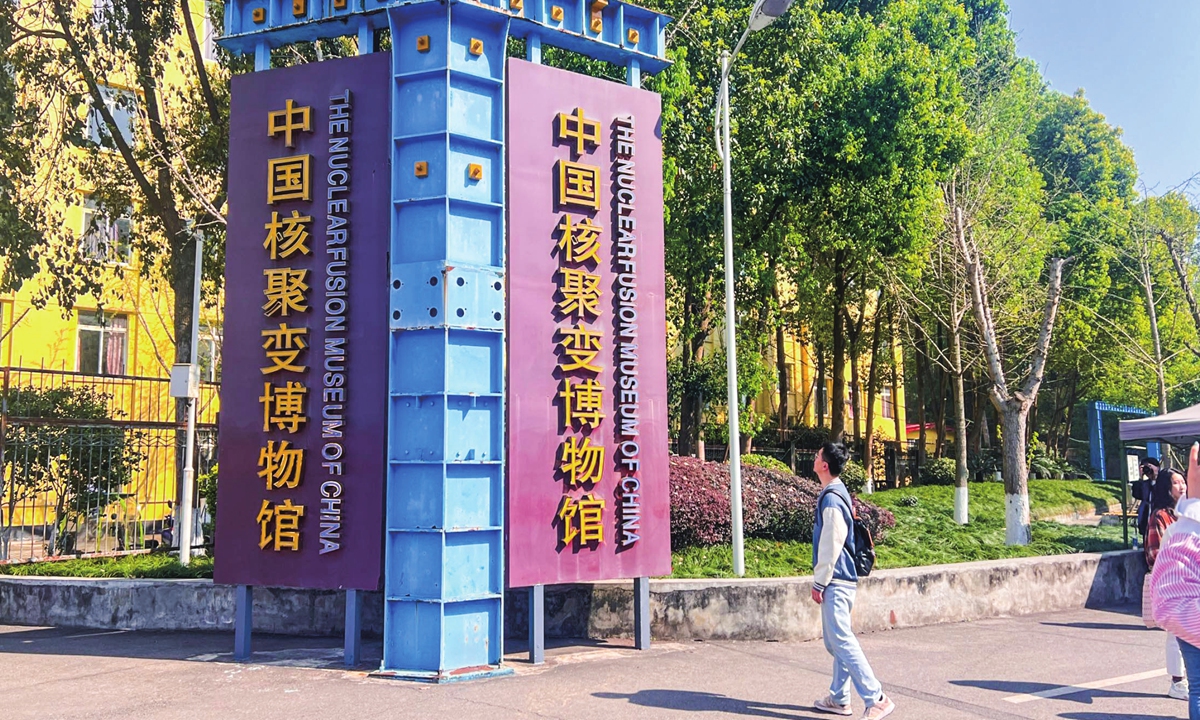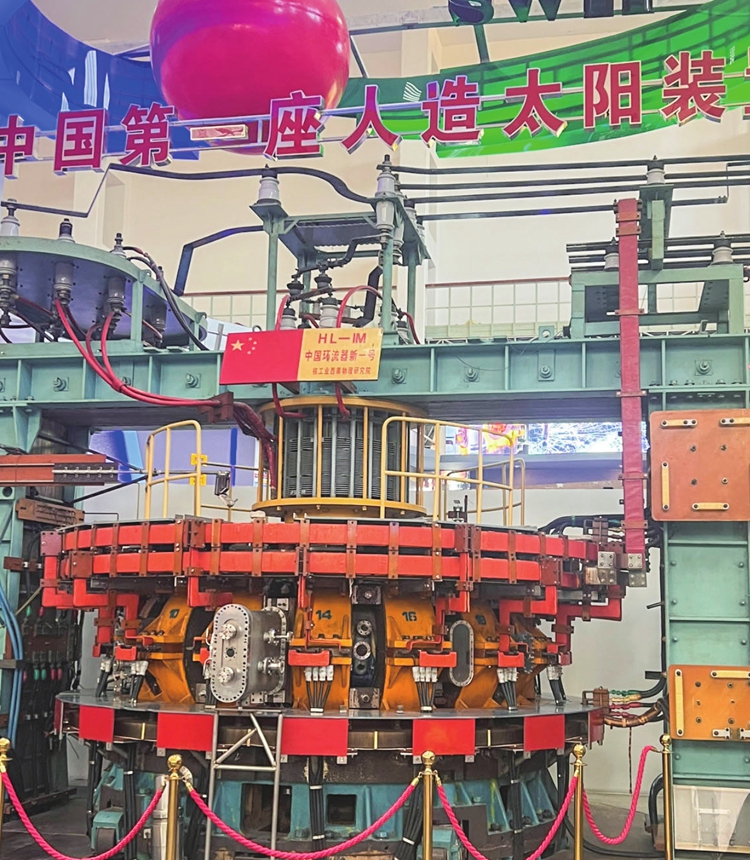
Visitors watch the Giant Buddha in Leshan, Southwest China's Sichuan Province. Photo: VCG
Leshan, nestled in Southwest China's Sichuan Province, is perennially popular among travelers, whether it's during the three-day Qingming Festival holiday in April or the upcoming May Day holiday. Renowned for its delectablefood characterized by delicacies such as sweet duck skin, tofu pudding and bobo chicken skewers, and well-known for its iconic Giant Buddha, Leshan attracts throngs of visitors, making it challenging to secure tickets to local attractions such as Mount Emei and the Leshan Giant Buddha during peak seasons.
What many people don't know is that Leshan is also home to China's only publicly accessible nuclear fusion museum, which witnessed the beginning of China's nuclear fusion dream and today showcases China's first artificial sun device - HL-1 tokamak.

The Nuclear Fusion Museum of China Photo: Leng Shumei/Global Times
A glimpse into historyLocated on the grounds of the Engineering & Technical College of Chengdu University of Technology in Leshan, the Nuclear fusion Museum of China is built on the former site of the HL-1 experimental device. Spanning a central exhibition area of approximately 1,800 square meters, the museum offers a comprehensive exhibition space.
Wang Xiangxing, director of the museum told Global Times that visitors to the museum can not only see the HL-1 and learn about the history of controlled nuclear fusion research, but also see some modern equipment, such as the top-notch prefabricated components of China's new-generation artificial sun HL-3, including the D-shaped coils and central columns.
Prefabricated components are scientific devices made in advance. Researchers use these prefabricated components to conduct initial experiments on scientific devices, especially tests on extreme values. After conducting experiments and obtaining the limit data of a scientific device, researchers will then conduct experiments on the formal device within a safe numerical range, Wang explained.
Today the place where the older generation of scientists worked has transformed to an important science education base, receiving tens of thousands of visitors from all walks of life every year. Wang sees popularizing nuclear knowledge and the stories of the older generation of scientists as his important responsibility. "Some people may fear nuclear energy, but there is no need for that. Nuclear energy is a very clean energy source, currently used in production, especially in sterilization, greatly improving production efficiency."

China's first artificial sun device, HL-1 tokamak Photo: Leng Shumei/Global Times
Inheriting spiritOutside the museum, students at the college are also preserving and perpetuating China's nuclear industry legacy in their own way.
Since 2018, the historical dramas
Where the Nuclear Dream Began and
The Blooming of Roses reflecting the 60-year arduous development of China's nuclear industry, have been widely welcomed.
Lu Zan, who plays Deng Jiaxian, the nuclear physicist remembered as the "father of the Chinese nuclear bomb," in
Where the Nuclear Dream Began told the Global Times thattaking a part in this drama has given him a deeper understanding and appreciation of the stories and spirit of these older-generation scientists.
Recalling a poignant scene where Deng bravely enters a test area to inspect a malfunctioning hydrogen bomb, Lu underscored the spirit of those scientists like Deng, who fearlessly overcomes obstacles. Such a spirit continues to inspire young generations to this day.
In the beautiful month of April, the roses on the campus of the School of Engineering and Technology at Chengdu University of Technology are in full bloom. If you happen to go to Leshan at this time, after you enjoy some of the local delicacies, why not take a walk through the campus, visit the rose garden, and pay homage to the spirit of the Chinese older generation of nuclear industry scientists?
URL: https://www.seeglobalnews.com/read-3499.html